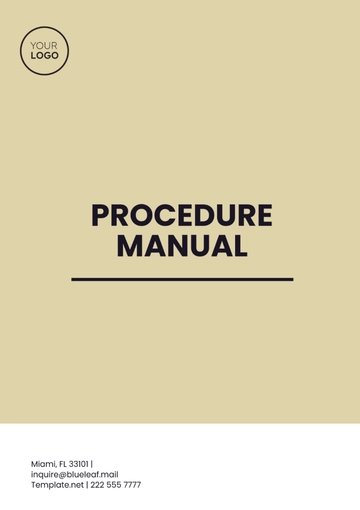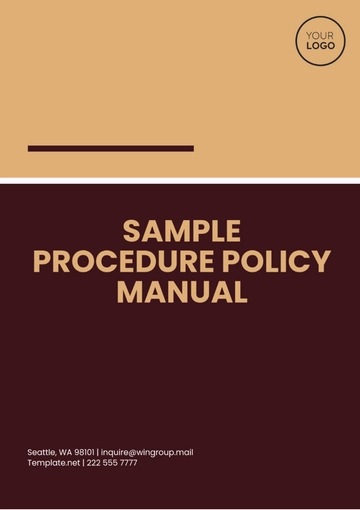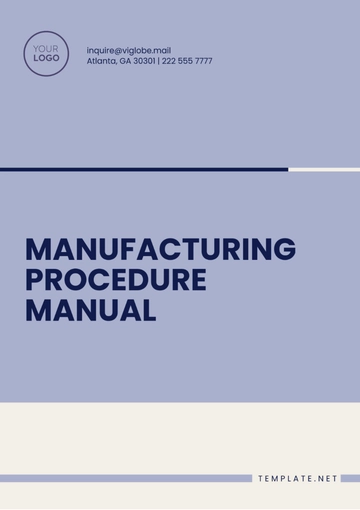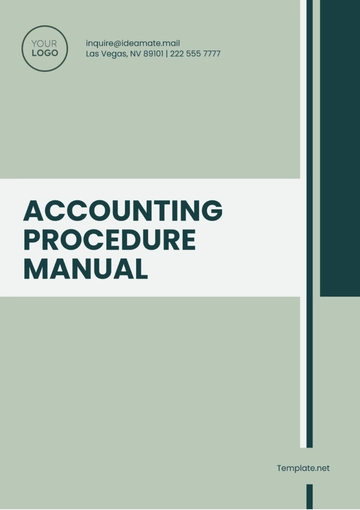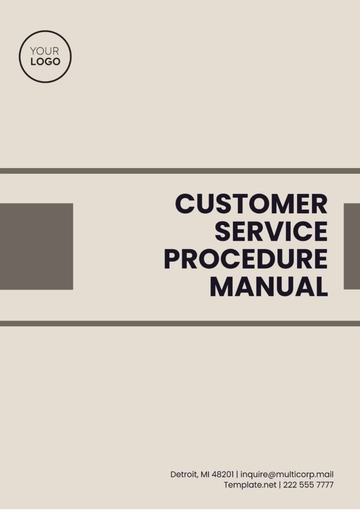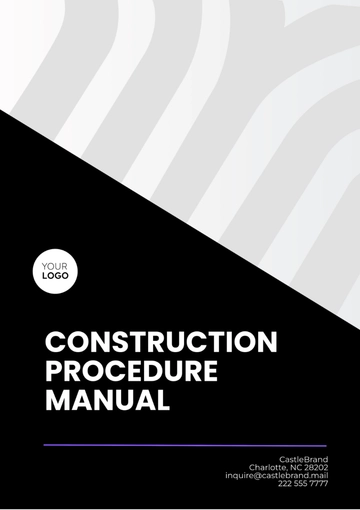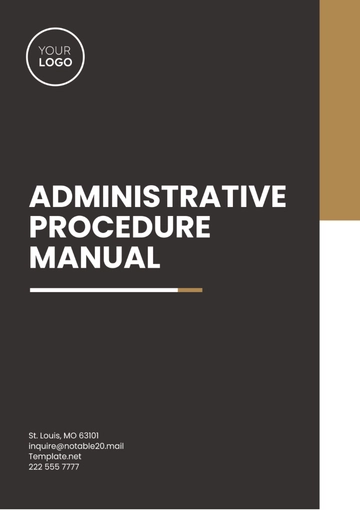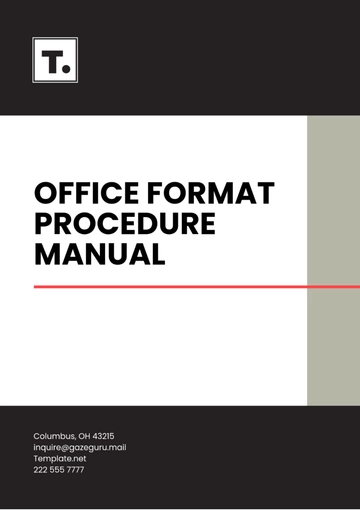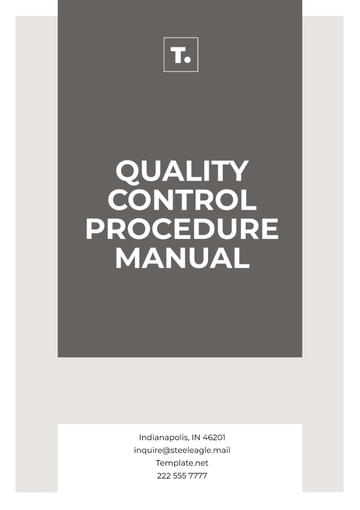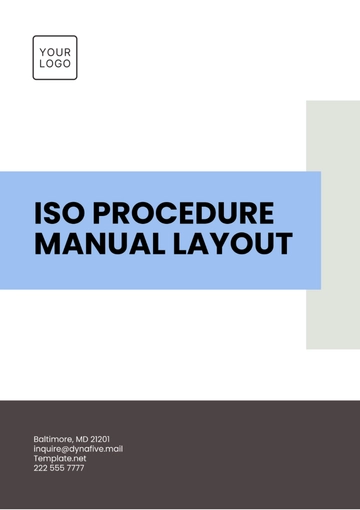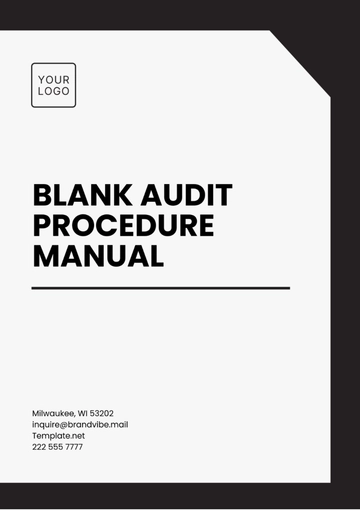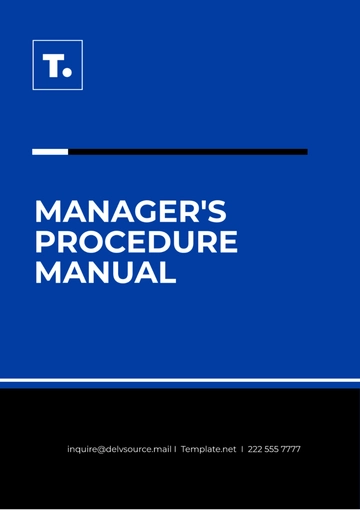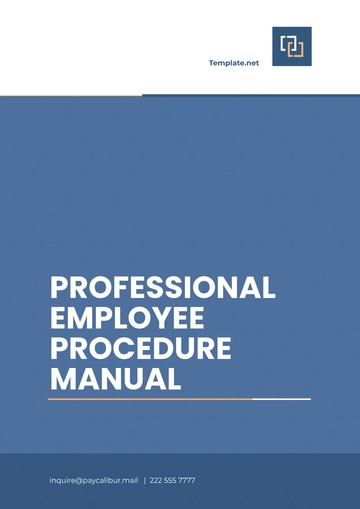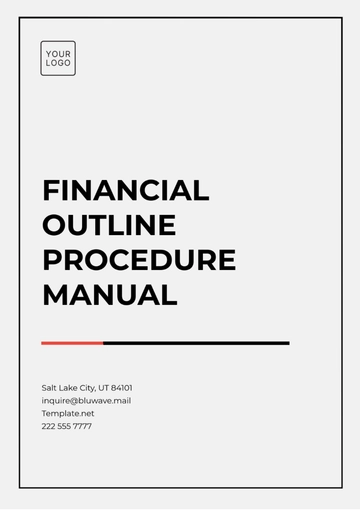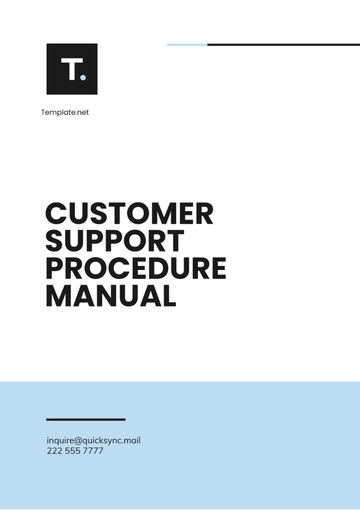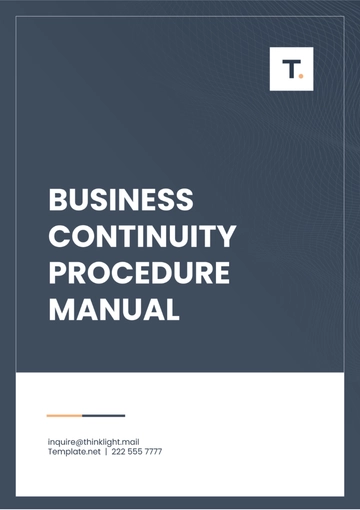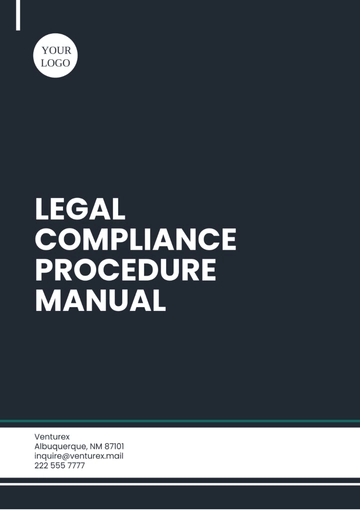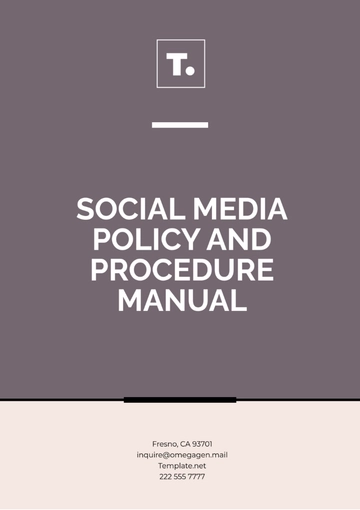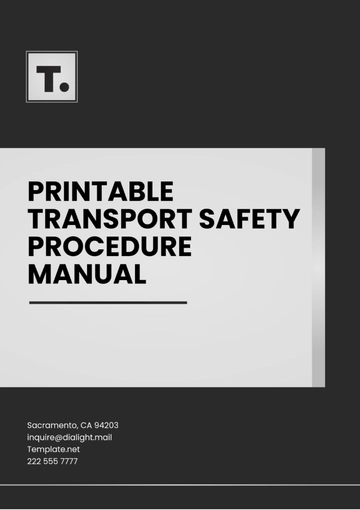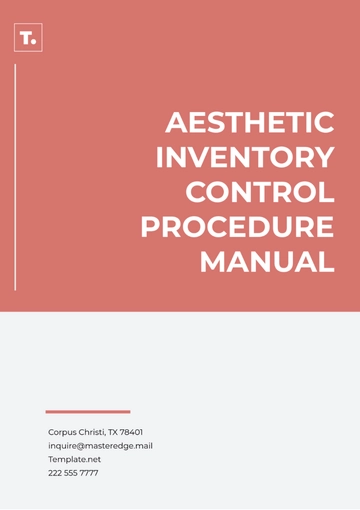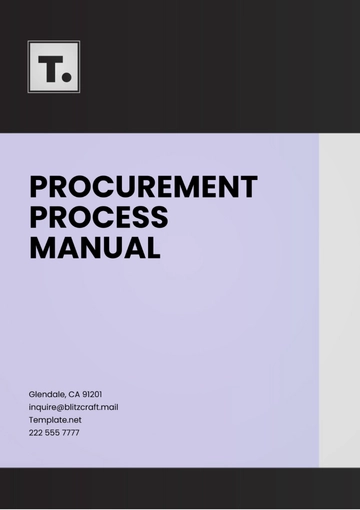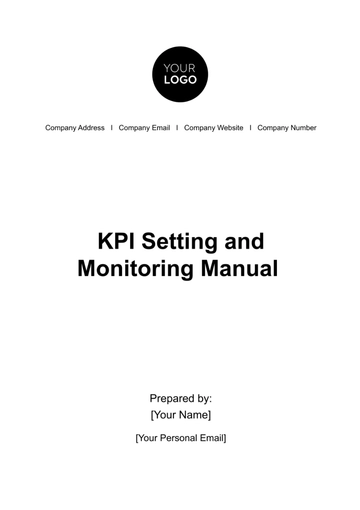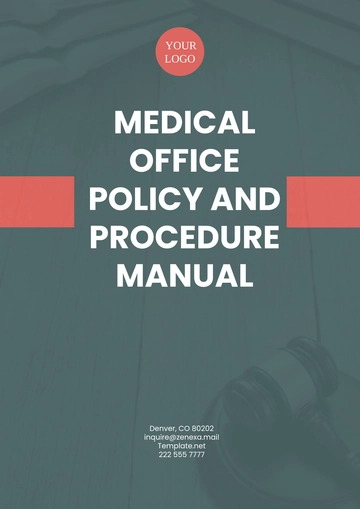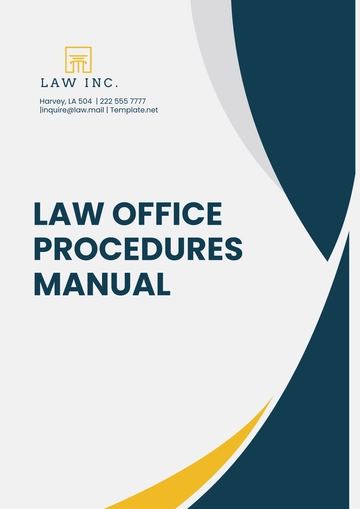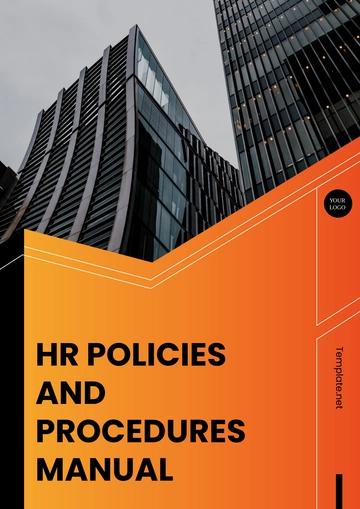Free Printable Transport Safety Procedure Manual

Prepared by: [Your Name]
Date: January 1, 2060
I. Introduction
The Transport Safety Procedure Manual is a crucial document designed to safeguard the well-being of employees, passengers, and the general public by ensuring safe and efficient transportation operations. This manual outlines essential safety protocols, operational guidelines, and emergency response procedures that all personnel must follow to minimize risks, maintain compliance with industry standards, and foster a safety-conscious work culture.
II. Safety Policies and Regulations
A. General Safety Guidelines
Ensure compliance with all safety regulations and guidelines that are established and enforced by local, state, and federal authorities in the transportation sector.
Ensure that safety audits and risk assessments are conducted regularly to identify potential hazards.
Encourage a proactive reporting culture where employees immediately report any unsafe conditions, incidents, or accidents.
B. Regulatory Compliance
Strictly comply with the Department of Transportation (DOT) guidelines and Occupational Safety and Health Administration (OSHA) safety standards.
Ensure that all vehicles meet or exceed safety regulations, including environmental and emission requirements.
Stay up to date with new regulations and incorporate changes into the safety practices and procedures.
III. Vehicle and Equipment Maintenance
A. Inspection Protocols
Daily vehicle inspections are mandatory, focusing on critical components such as brakes, lights, tires, and fluid levels.
Before embarking on every trip, conduct comprehensive safety inspections and meticulously document all findings to ensure thorough evaluation and compliance with safety standards.
Any malfunction or damage identified during inspections should be reported immediately to prevent breakdowns and ensure vehicle safety.
B. Maintenance Schedule
Adhere to a routine vehicle maintenance schedule, including regular checks for wear and tear, oil changes, tire rotations, and system diagnostics.
Keep comprehensive records of all maintenance activities and repairs to ensure compliance with safety standards and audit requirements.
In case of a recurring issue, initiate a more thorough inspection to identify potential root causes.
IV. Driver Responsibilities
A. Safe Driving Practices
Ensure all drivers follow the legal speed limits, traffic regulations, and best practices for defensive driving.
For safer driving, remove distractions by discouraging the use of phones and any activities that divert attention from the road.
Seat belt use is mandatory for all personnel in the vehicle, including passengers.
B. Handling Adverse Conditions
Drivers must adjust their driving behavior according to weather conditions such as rain, snow, fog, or icy roads.
In case of poor visibility, reduce speed and, if necessary, pull over to a safe area until conditions improve.
Always be prepared for the unexpected, ensuring that vehicles are equipped with emergency supplies such as flashlights, first-aid kits, and emergency signaling tools.
V. Cargo Safety
A. Loading and Unloading Procedures
Cargo must be loaded and unloaded in a secure, controlled manner, ensuring the weight is distributed evenly to avoid shifting during transit.
Use the appropriate equipment (e.g., forklifts, hoists) to handle heavy or large items to prevent injuries and damage to cargo.
Secure all items properly using ropes, straps, or other safety devices to minimize the risk of accidents or damage.
B. Cargo Documentation
Ensure that all cargo documentation, including bills of lading, manifests, and inspection reports, is complete and accurate before transport.
Check that the cargo complies with all legal and safety requirements, particularly for hazardous or specialized materials.
Maintain a record of cargo inspections and discrepancies for reference during audits.
VI. Emergency Procedures
A. Accident Response
In the event of an accident, assess the situation quickly to check for injuries and summon emergency medical services immediately.
Secure the accident site by placing hazard warning lights, cones, and signals to alert oncoming traffic and avoid further incidents.
Prepare a detailed incident report and document all actions taken at the scene for legal and insurance purposes.
B. Vehicle Breakdown
In the case of a vehicle breakdown, ensure that the vehicle is moved to a safe location off the road if possible.
Contact roadside assistance immediately and notify the fleet manager about the situation.
Maintain proper hazard signage around the vehicle to alert passing drivers and prevent further accidents.
VII. Training and Certification Requirements
A. Driver Training Programs
All drivers are required to complete a comprehensive safety training program, which includes defensive driving, emergency procedures, and cargo handling.
Ongoing training sessions should be held to address new safety developments and reinforce best practices in the field.
Periodic evaluations and refresher courses should be mandatory to ensure drivers stay current on industry standards and regulations.
B. Certifications
Drivers must possess valid certifications, such as a Commercial Driver’s License (CDL), and other relevant credentials for transporting hazardous materials or oversized cargo.
In addition to basic training, drivers should undergo specialized certification programs for handling dangerous goods or specific transport environments.
VIII. Incident Reporting
A. Reporting Procedures
Any safety-related incidents, including accidents, near-misses, or hazards, must be reported immediately through the proper channels.
Incident reports should include a detailed description of the event, the personnel involved, the actions taken, and any outcomes.
Supervisors and safety officers should review reports promptly to determine corrective actions and prevent similar incidents in the future.
B. Investigation Process
Safety officers will conduct a thorough investigation of all reported incidents, aiming to identify root causes and contributing factors.
Corrective measures should be implemented swiftly to address any safety gaps or weaknesses discovered during the investigation.
All findings, along with proposed changes to policies or procedures, should be communicated to the relevant personnel to prevent recurrence.
- 100% Customizable, free editor
- Access 1 Million+ Templates, photo’s & graphics
- Download or share as a template
- Click and replace photos, graphics, text, backgrounds
- Resize, crop, AI write & more
- Access advanced editor
Prioritize safety with Template.net’s Printable Transport Safety Procedure Manual Template. This editable and customizable template is perfect for documenting procedures that ensure safe transportation practices. Editable in our AI Editor Tool, this manual is ideal for companies in logistics and transportation looking to standardize safety protocols. Enhance compliance and reduce risks with this detailed, print-ready safety guide.
